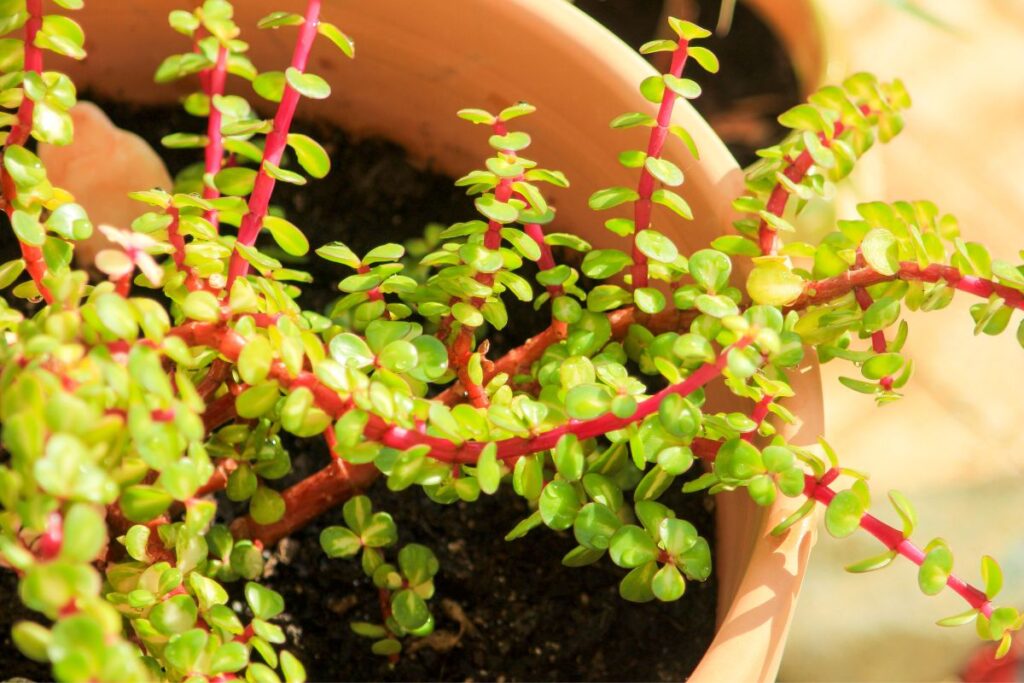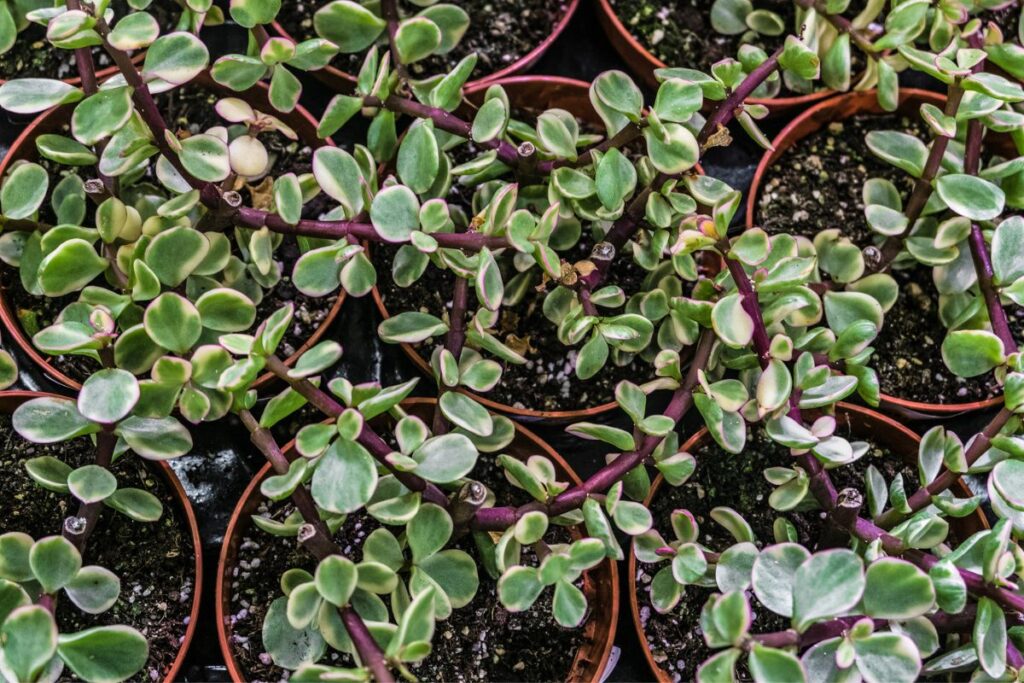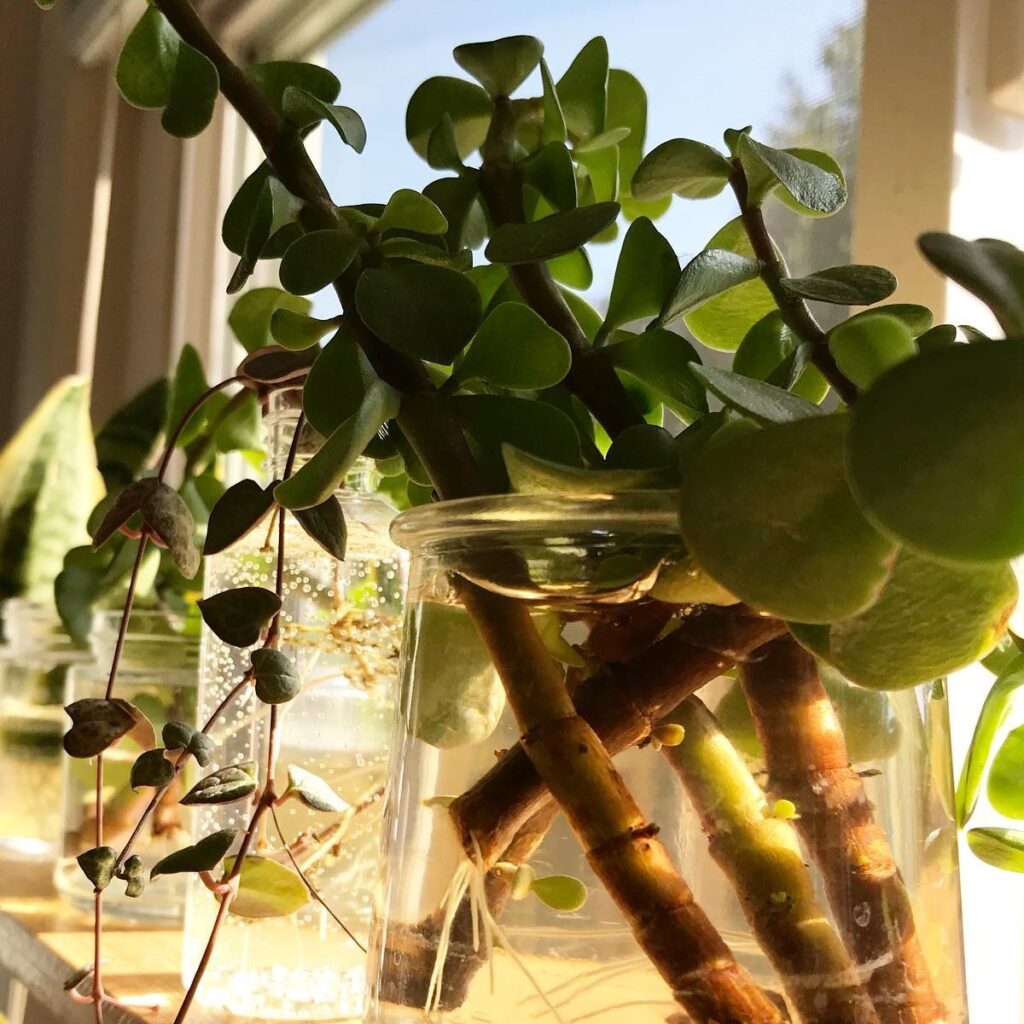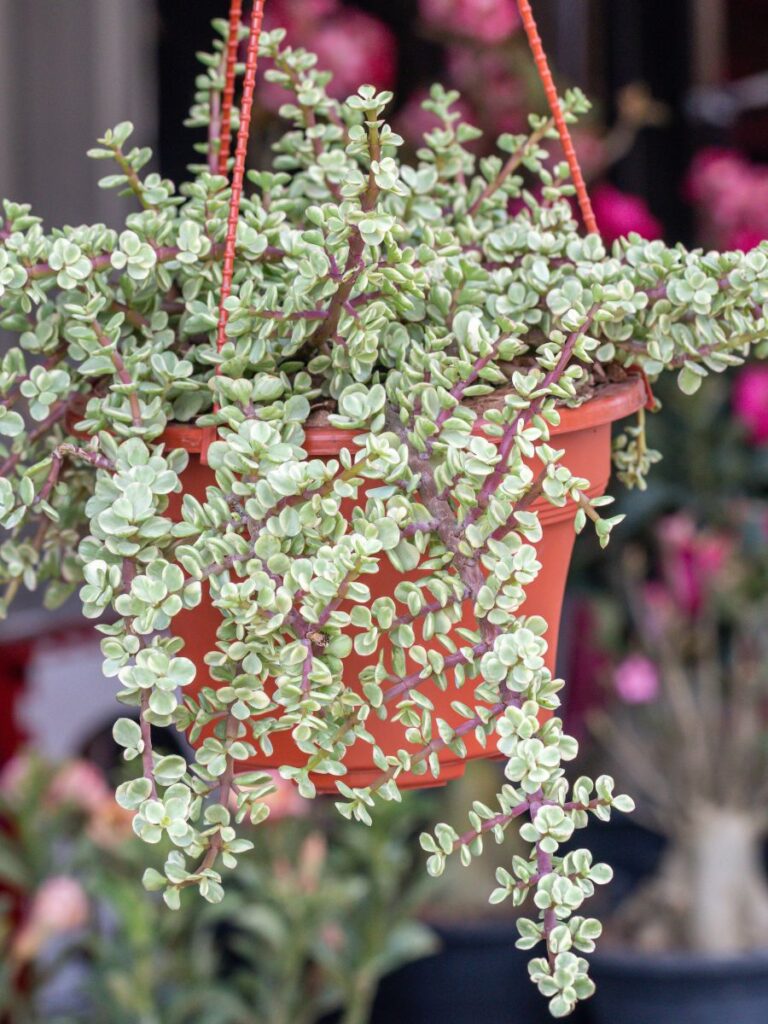The Ultimate Elephant Bush Propagation Guide: Achieve a High Success Rate
Do you ever wish you could effortlessly grow beautiful plants and impress your friends and family? Well, I have some exciting news for you! Propagating elephant bush plants is not only a rewarding experience but also surprisingly easy. In this guide, I’ll show you how to successfully propagate these plants step-by-step, so you can create vibrant greenery without breaking a sweat.
Now, I understand that you might feel a bit nervous if you’re new to gardening. But don’t worry! With just a few simple steps, even beginners can become experts in no time. I’ll walk you through the entire process, making it super easy to follow along and achieve a high success rate.
Not only will I cover the essential propagation techniques, but I’ll also share all the handy tips and tricks to ensure your plants grow into healthy, mature specimens. So get ready to become a pro at propagating elephant bushes. Let’s dive in and discover how you can effortlessly create a stunning collection of plants that will impress everyone who sees them!

Contents
- 1 Best Time For Elephant Bush Propagation
- 2 How To Propagate Elephant Bush (Portulacaria Afra)
- 3 Will Elephant Bush Root In Water?
- 4 What Is The Best Way To Propagate An Elephant Bush?
- 5 What Is The Best Soil For Elephant Bush?
- 6 Is Elephant Bush A Slow Grower?
- 7 Do Elephant Bushes Like Sun Or Shade?
- 8 Where Do You Cut Elephant Bushes?
- 9 Can Elephant Bush Grow In Sand?
- 10 Does Elephant Bush Need A Lot Of Water?
- 11 Can I Bottom Water Elephant Bush?
- 12 What Kind Of Fertilizer Do Elephant Bushes Need?
- 13 Why Are All The Leaves Falling Off My Elephant Bush?
- 14 How Do I Make My Elephant Bush Bushier?
- 15 Will Elephant Bush Regrow Leaves?
- 16 Conclusion
Best Time For Elephant Bush Propagation
Timing is everything when it comes to propagating the Elephant Bush, also known as portulacaria afra. If you want to grow this succulent shrub from cuttings, it’s crucial to pick the right time of year. The best season for planting these cuttings is winter. Specifically, late winter before new growth starts is the ideal time.
Why is this timing so important? Well, if you plant the cuttings too early or in the middle of winter, there’s a risk of too much moisture in the air. This excess moisture can lead to rotting of the cuttings, which is definitely not what we want. On the other hand, if you plant too late, the cuttings may not get enough light exposure during certain parts of the year, which can stunt their growth.
So, here’s my advice: aim to cut your stems between December and February. During these months, temperatures are cooler, and the days are shorter. This creates the perfect conditions for your cuttings to take root successfully and grow into healthy plants. Remember, timing is key to give your Elephant Bush cuttings the best chance to thrive!
How To Propagate Elephant Bush (Portulacaria Afra)
Let’s dive into the step-by-step process of propagating Portulacaria Afra, an attractive succulent. It’s easy, and if you follow these instructions closely, you’ll have a high success rate!
- Choose healthy stems from an established plant: Look for stems that are in good shape and not damaged. Use sharp scissors or pruning shears to cut just below a set of leaves.
- Prepare the cuttings: Once you have your stems, remove any lower leaves so that only one pair remains at the top of each cutting. Ideally, the length of these cuttings should be around 3-4 inches.
- Apply rooting powder: Dip the end of each stem cutting into some rooting powder. Make sure to tap off any excess before moving on to the next step.
- Plant the cuttings: Use well-drained soil to plant the cuttings. Ensure that there are no air pockets when you place them in the soil. Lightly water the cuttings, making sure they are adequately moist but not overly soaked. Keep an eye on the soil moisture throughout the next few weeks.
- Provide the right light conditions: Place your cuttings in an area with bright indirect light. This means they should receive sunlight, but not directly. Avoid placing them in harsh, direct sunlight as it can damage the delicate cuttings.
Remember to strike a balance with watering during this period. While you want to keep the cuttings moist, they shouldn’t dry out completely. Adequate moisture will promote strong growth once the cuttings are properly rooted.
That’s it! By following these steps, you’ll be well on your way to successfully propagating Portulacaria Afra and growing your collection of these beautiful succulents.

Propagating elephant bush via leaf cuttings is not ideal because it can be difficult for the cutting to take root and begin growing. While it is possible for a leaf cutting to develop roots, the process is unreliable and can take a long time.
Will Elephant Bush Root In Water?
Propagating elephant bush in water may not be the best choice. While some people have had success with this method, it can often lead to root rot because of too much moisture. To ensure more reliable results, it’s better to stick with traditional methods like using soil.
If you still want to give water propagation a try, here’s what you can do. Take a few healthy stems from an existing plant and remove the bottom leaves from each stem. Place them in a jar filled with clean, room temperature water. Put the jar near bright light where the temperature remains steady.
Remember to change the water every 3-4 days. Once the cuttings have rooted, it’s important to transfer them into soil. Avoid leaving them in standing water for too long, as this can invite fungal problems that may harm or kill your new plants.

What Is The Best Way To Propagate An Elephant Bush?
The best way to propagate an elephant bush is by taking stem cuttings from existing plants and allowing them to dry out for several days before planting them in well-draining soil. This helps prevent root rot caused by excessive moisture. After planting, water the cuttings sparingly until you see new growth.
Be sure to give enough time between watering sessions because over-watering can damage these succulents. With proper care, you’ll enjoy lush foliage all year round!
What Is The Best Soil For Elephant Bush?
Choosing the right soil for propagating an elephant bush is crucial. Opt for a potting mix that drains quickly and contains some gritty materials like sand or pumice. Succulent soil mixes are a great option as they include these components along with organic matter for retaining moisture. Regular potting soil works too, just ensure you add some grit for improved drainage.
No matter the soil type, make sure the container has drainage holes at the bottom. Elephant bushes don’t like sitting in waterlogged soil, so proper drainage is vital for successful propagation. If you’re unsure about the amount of gritty material to add, try mixing 1 part perlite with 2 parts potting mix. This will allow the soil to absorb water without becoming oversaturated.
Is Elephant Bush A Slow Grower?
No, the elephant bush succulent is not a slow grower when it comes to propagation. It can establish roots and grow quickly in its new environment. However, growth speed may vary depending on the plant’s hardiness and the climate it’s grown in. Variegated elephant bushes require extra care because they are more delicate. With proper attention and maintenance, you can expect a high success rate when propagating elephant bush plants.

Do Elephant Bushes Like Sun Or Shade?
Elephant bushes enjoy sunlight, but they can handle some shade too. To help them grow their best, these plants like bright indirect sunlight and some shade throughout the day. They can survive dry conditions and will develop glossy leaves when given enough water.
For propagating rainbow elephant bushes, it’s best to provide partial shade or filtered sunlight. Too much direct sun can scorch the foliage. Note that there’s a difference between jade plants and elephant bushes when it comes to light requirements. Jade plants prefer more sunlight compared to what an elephant bush needs.
When caring for your elephant bush, make sure it gets enough light to thrive, but avoid exposing it to excessive direct heat that may damage the delicate leaves.
Where Do You Cut Elephant Bushes?
Knowing where to cut the stem is important for successful elephant bush propagation. To achieve high success rates, you must locate a leaf node on your stem cutting. Cutting at the right spot can make or break your success!
Here are 5 tips on how to find a leaf node when propagating an elephant bush:
- Look along the stem for small bumps protruding from it – these are the leaf nodes.
- Make sure each cutting has several sets of leaves and at least one visible leaf node.
- If needed, use a magnifying glass to inspect each stem segment and ensure it has a good leaf node.
- Use sharp garden shears to cut just below the bottommost set of leaves, leaving room for new roots to grow during propagation.
- Allow 6-8 weeks for the cuttings to root successfully before springtime.
By following these simple steps, you’ll easily find the perfect spot on your stems for cutting, ensuring successful elephant bush propagation!
Can Elephant Bush Grow In Sand?
Elephant bushes can easily propagate from stem cuttings in water or soil. Although sand can provide good drainage for some plants, it’s not perfect for portulacaria afra propagation.
Sand doesn’t maintain consistent moisture levels as well as other soil mixes. Additionally, sand has minimal nutrient content, making it difficult to provide the right nutrients to the plant.
A better option is to use a mix with more organic matter, such as compost or peat moss. This provides proper nutrition and excellent drainage.
An ideal mixture could include two parts coarse-grade potting soil mixed with one part perlite, vermiculite, and/or sand. This combination allows for adequate aeration and moisture retention.
Remember, if the soil quality is poor, it can result in stunted growth or even death. Aim for a balanced soil composition that offers consistent moisture while allowing airflow around the roots. This creates optimal conditions for your new cutting’s long-term health!
Does Elephant Bush Need A Lot Of Water?
Yes, elephant bushes require regular watering. They thrive best in moist soil but should never become soggy or overwatered, which can lead to root rot. To avoid this, ensure your pot has drainage holes to allow excess water to escape.
To determine watering needs, test the soil moisture by sticking your finger into the top inch. If dry, water the plant; if damp, wait until it dries out. In warmer and more humid weather, you’ll need to water more frequently than during cooler months. Adjust the watering schedule accordingly for optimal growth.
Can I Bottom Water Elephant Bush?
Yes, bottom watering can be beneficial for elephant bush propagation. When bottom watering, use porous soil that allows good drainage. It’s also important to have wide drainage holes to prevent water from stagnating around the roots.
Bottom watering differs from top watering as water slowly seeps up through the medium, encouraging rapid rooting while keeping the foliage dry. This method is particularly useful when propagating multiple cuttings in one large container, ensuring even hydration despite variations in cutting sizes and depths.
What Kind Of Fertilizer Do Elephant Bushes Need?
Elephant bushes don’t require heavy feeding and do well with light applications of fertilizer. Use a balanced slow-release formula once every two months for your elephant bush propagation needs.
Why Are All The Leaves Falling Off My Elephant Bush?
If you’re worried about your elephant bush losing its leaves, there could be a few reasons behind it. The first one to consider is air circulation. Without proper ventilation, your plant can become vulnerable to diseases and pests, leading to leaf loss. Here’s a checklist to ensure good airflow:
- Place your elephant bush in a spot with plenty of natural light.
- Use well-draining soil that has enough organic matter.
- Avoid overcrowding the base of the plant with other plants.
- Regularly trim any dead or diseased branches.
Another possible cause for yellowing and dropping leaves is insufficient watering. Make sure to water your plant regularly but avoid overwatering. A good indicator is to check if the green leaves are turning yellow – this usually means your elephant bush needs a drink! A healthy root system also supports strong leaf growth.
Lastly, fertilize your plant every month during its growing season with a balanced fertilizer suitable for succulents like the elephant bush. This will help maintain lush and green foliage while promoting healthy leaf growth.
How Do I Make My Elephant Bush Bushier?
To make your elephant bush bushier, you can try a propagation technique. Find a mature elephant bush and gently trim off some stems. Take these stem cuttings and plant them in good soil or a sandy mix. Keep the soil lightly watered daily for a few weeks until the roots develop.
Once the cuttings have rooted, transfer them back into the original container and continue watering daily. Over time, you’ll see new growth not only in the original plant but also in each cutting. This will result in a fuller, more vibrant-looking bush! With proper care, your elephant bush will thrive and become even bushier within a few weeks of propagation.
Will Elephant Bush Regrow Leaves?
Absolutely! Elephant bushes will regrow leaves. Don’t worry if the stem seems bare or leafless during winter; this is normal, and the leaves will grow back when spring arrives. With some extra care during this time, your elephant bush can become a stunning indoor plant.
To ensure healthy growth, provide your elephant bush with ample sunlight and consistent watering. Check the soil regularly and water as needed to keep it moist. Additionally, monthly fertilization with organic plant food aids in promoting new growth throughout the year.
Conclusion
In conclusion, propagating an elephant bush can bring life and greenery to your home. It requires patience, dedication, and the right knowledge, but the rewards are worth it! Remember, timing is crucial, so plant at the appropriate time for successful rooting. Use good soil, fertilize regularly, and be patient. Leaves may fall due to transplant stress, but they will regrow once the plant adjusts to its new environment.
Propagation may not always be easy, but it’s definitely worth the effort. By following these tips, I’m confident you’ll have a high success rate in propagating your beautiful elephant bush. Good luck on your journey to becoming an elephant bush propagation expert!
